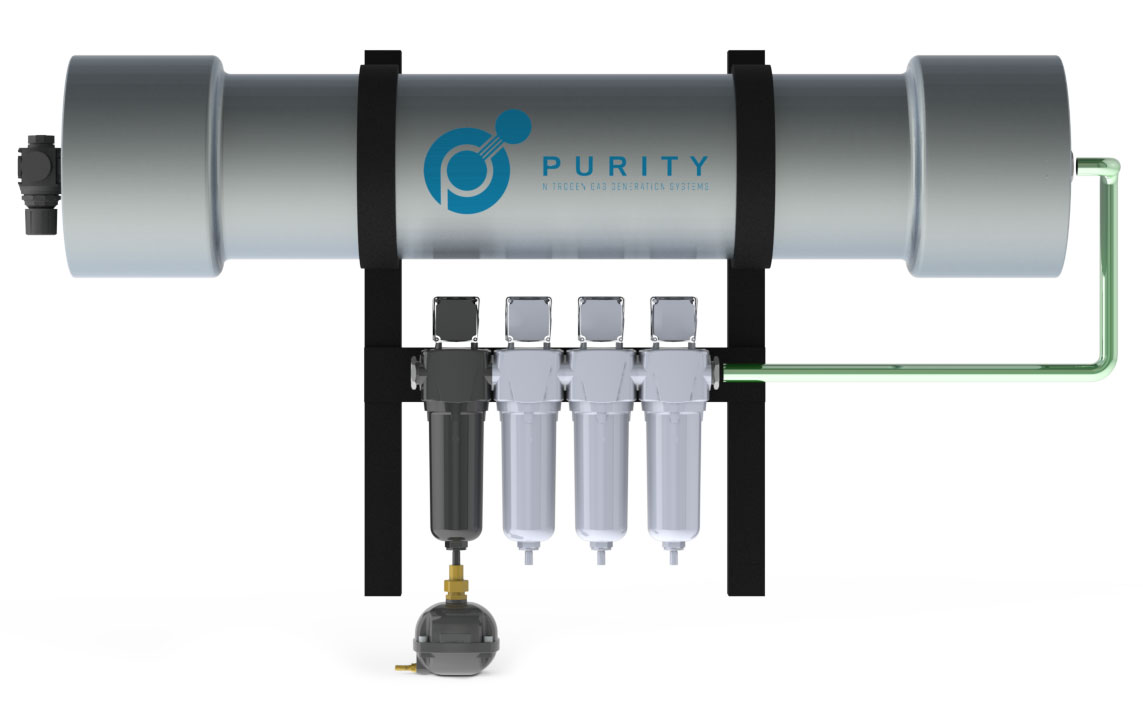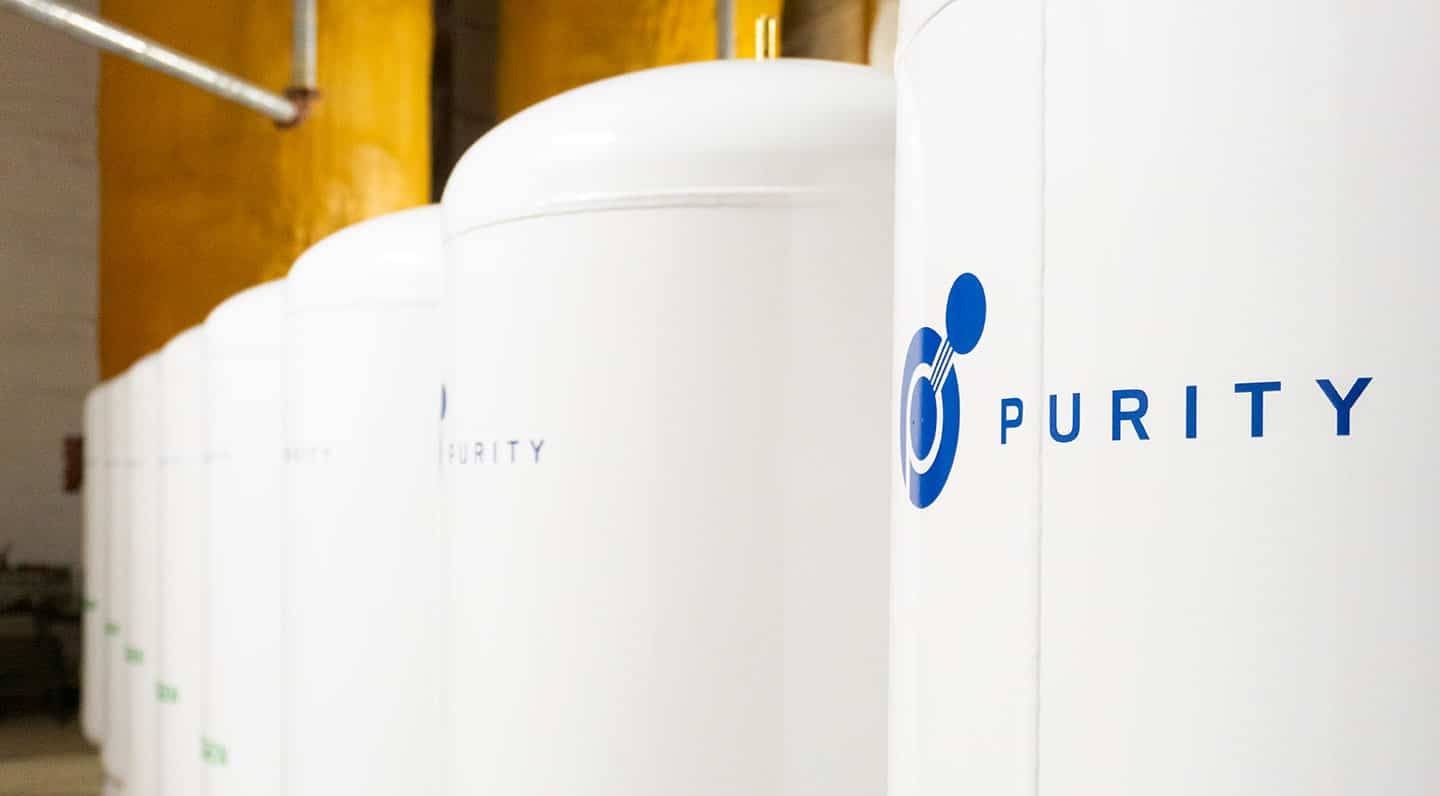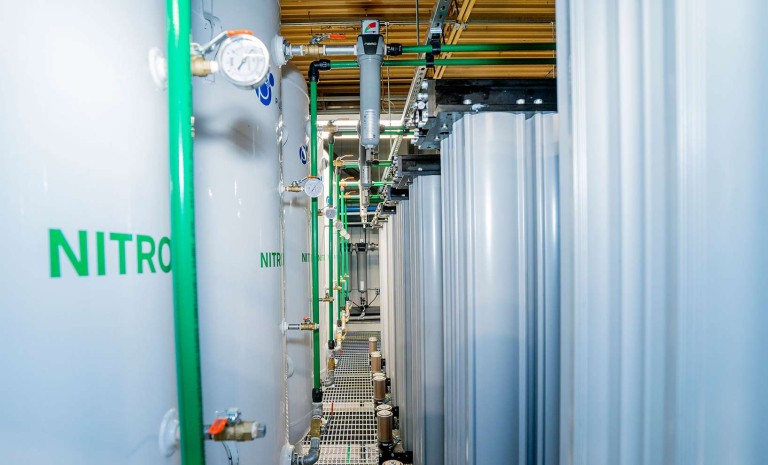Membrane vs. PSA
Membrane vs. PSA nitrogen gas generation is a widely challenged topic and we are often asked which technology is better. When choosing between membrane or PSA nitrogen generation, the deciding factors are the required purity and flow rate.
What is Membrane Gas Generation?
Let’s start from the basics. The air we breathe is made up of 78% nitrogen, 21% oxygen and the remainder are trace gases (argon, carbon dioxide and other gases). The membrane nitrogen gas generator uses a process called selective permeation to separate the nitrogen molecules from the oxygen and other trace gases. For the process to work, the air has to permeate through thousands of porous hollow fibres. Each molecule passing through the fibres has a specific permeation rate that results in either diffusing through or dissolving out of the fibre membrane.
Why Choose Membrane?
It is the most cost-effective solution for low flow applications, up to 400 scfh at 99.9% purity or 2500 scfh at 95% purity. The membrane generator has a relatively small footprint which allows for easy installations and can be installed vertically or horizontally.

There are no moving parts and there is no electricity required so it is easy to use and maintain. This design still allows the generator to achieve output purity levels between 95% – 99.9%. Furthermore, it is fairly quiet; it operates at less than 70 dBA. To put that in perspective, normal conversation ranges between 60 – 70 dBA, a vacuum cleaner operates in the 75 dBA range and the noise inside a car travelling at 100 kph is 70 – 80 dBA.
What Is PSA Gas Generation?
PSA is the abbreviation for Pressure Swing Adsorption. It is a process to adsorb nitrogen out of the air with carbon molecular sieve (CMS). The difference between adsorption & absorption is the oxygen and trace gas molecules adhere to the surface of the CMS instead of being drawn in or “absorbed”. The CMS have pore diameters similar to those of oxygen and therefore do not allow the larger nitrogen molecules to get adsorbed. At higher pressures (relative to 1 atm), the CMS adsorb the oxygen and trace gases while allowing nitrogen to pass through at the desired purity level. The purity level is a function of the contact time with the CMS.
Since the CMS can only adsorb a finite number of molecules, it has to be purged with nitrogen gas when it is fully saturated. The PSA systems are therefore made up of two vessels in which one vessel is producing nitrogen while the other is depressurized and flushed with nitrogen gas to remove the adsorbed oxygen. The cycling between the two vessels allows for the continuous production of high purity nitrogen gas.
PSA is the abbreviation for Pressure Swing Adsorption. It is a process to adsorb nitrogen out of the air with carbon molecular sieve (CMS). The difference between adsorption & absorption is the oxygen and trace gas molecules adhere to the surface of the CMS instead of being drawn in or “absorbed”. The CMS have pore diameters similar to those of oxygen and therefore do not allow the larger nitrogen molecules to get adsorbed. At higher pressures (relative to 1 atm), the CMS adsorb the oxygen and trace gases while allowing nitrogen to pass through at the desired purity level. The purity level is a function of the contact time with the CMS.
Since the CMS can only adsorb a finite number of molecules, it has to be purged with nitrogen gas when it is fully saturated. The PSA systems are therefore made up of two vessels in which one vessel is producing nitrogen while the other is depressurized and flushed with nitrogen gas to remove the adsorbed oxygen. The cycling between the two vessels allows for the continuous production of high purity nitrogen gas.
When Should PSA Be Used?
PSA nitrogen generators produce up to 99.999% pure nitrogen gas on a consistent basis. They have been designed to provide the same flow rates for their operational lifespan. These generators have a mass flow controller and a built-in oxygen analyzer which ensure the output purity.When utilizing modular technology, several generators work in tandem in order to produce high flow rates. These systems can easily meet the large demands for nitrogen gas in various manufacturing industries; from filling snack food bags to cutting ½” stainless steel with a laser. The most common industries being:
The generators are very reliable and the CMS is designed to last decades. There are few moving parts in the generator, all of which are easily replaceable. These generators have the lowest air-to-nitrogen conversion ratios, with compressed air being the main factor in total operational costs of these types of systems.

Need Help?
So, which gas separation process is better? It truly depends on the application and its requirements. Contact us to learn more about about nitrogen generation technology and which gas separation process is most suitable for your application.
 by Dalvir Jandu, P.Eng.
by Dalvir Jandu, P.Eng.

